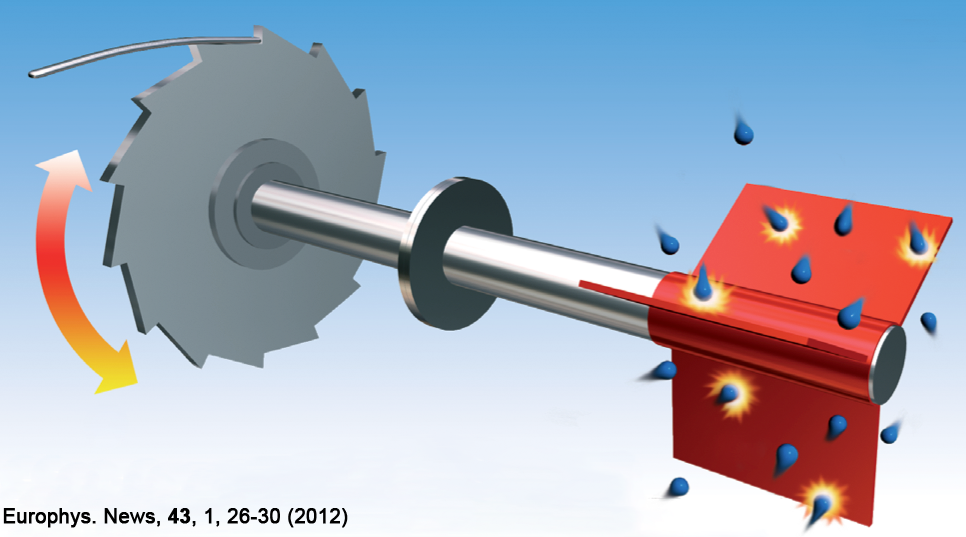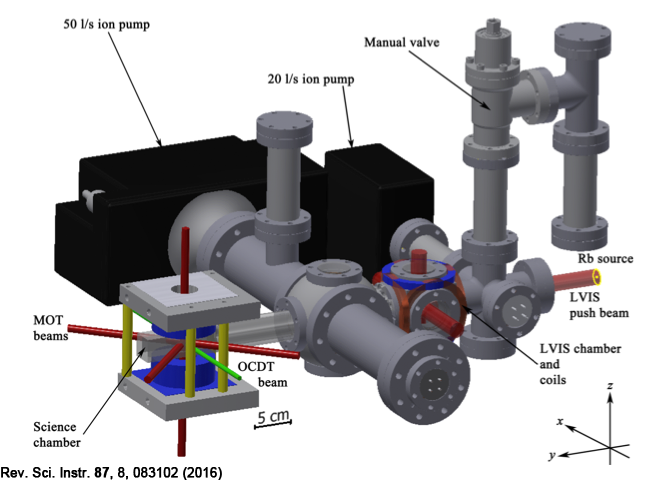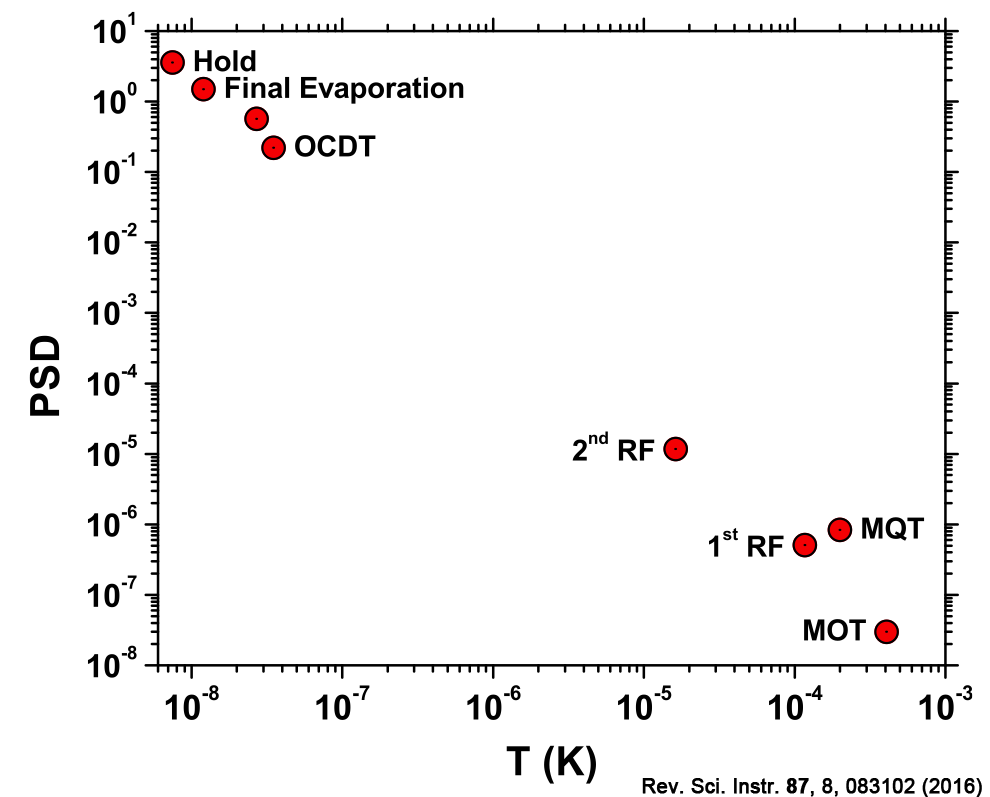Prof Ferruccio Renzoni
Transport in Optical Lattices

Our group has a long track record in using cold atoms in optical lattices to model different phenomena in statistical physics. The team has already produced several highlights in the field of non-equilibrium statistical mechanics, with results in the areas of the so called "ratchet effect", of power-law tail distributions and of vibrational mechanics. Current research aims to explore the deep quantum regime with a Bose-Einstein condensate in driven lattices.
Theory of Transport in Out-of-Equilibrium Systems
We have widely investigated non-equilibrium statistical mechanics in different atomic systems and regimes. In particular, we have investigated the realisation of directed transport in unbiased systems driven out-of-equilibrium. In such systems, a net DC current is produced by rectification of unbiased fluctuations. These phenomena, also known as the "ratchet effect", are ubiquitous in nature and offer a new paradigm for transport engineering in quantum devices.
People (current): Ferruccio Renzoni
Collaborations: Prof David Cubero, Sevilla
1-D Hamiltonian Regime in Ultra-cold Quantum Gases: Quantum Ratchet and sub-Fourier Dynamics
We investigate transport phenomena in out-of-equilibrium ultra-cold atoms in a driven Hamiltonian optical lattice. By using tailored symmetry breaking of a driven non-dissipative optical lattice, we want to explore new avenues for optical control of non-linear systems and their sub-Fourier dynamics.
People (current): Luca Marmugi, Ferruccio Renzoni
2-D Dissipative Regime in Cold Cs Atoms: Ratchet Effect
Our group has been developing cold atom systems to model Brownian ratchets, that is, in asymmetrical systems that are able to produce useful work out of microscopic fluctuations. Using cold atoms in driven dissipative optical lattices, we were able to explore the relationship between symmetry and transport in Brownian ratchets, both in the periodic and in the quasi-periodic regime.
People (current): Ferruccio Renzoni
Theory of Transport in Out-of-Equilibrium Systems
An unbiased system, subject to thermal fluctuations at equilibrium, cannot produce any directed transport, as much as a conductor at thermal equilibrium exhibits fluctuations which do not produce a net directed current. In fact, the second law of thermodynamics prevents the possibility of creating a current with a system at equilibrium. By driving the system out of equilibrium, the situation changes. Here, we study how to drive atomic systems out of equilibrium and how to control the generated current with lasers, to obtain all-optical control of atomic transport.

The Ratchet Effect
Cold atoms represent an ideal testbed for investigating the dynamics of driven systems, thanks to the fine control achievable in atomic physics, to the virtual absence of a thermal bath, and to the long interaction times that can be obtained. One of the most striking features of the ratchet effect with cold atoms is that it can be tailored and controlled by exploiting the properties of optical lattices, i.e. by suitable laser fields and their properties. The goal of our research is to theoretically investigate, analyse and predict new systems and protocols for generating and controlling transport of particles, in particular through the symmetry analysis of the system.
Symmetry Breaking
The onset of a directed current is in fact related to the breaking of space-time symmetries of the out-of-equilibrium system, and in particular of its equation of motion (EoM). Specifically, in cold atoms loaded in an optical lattice, subjected to a time-dependent force of zero mean, we aim to identifying the conditions which make the equation of motion invariant under transformations involving momentum reversal, i.e. p to -p and to remove them. If the EoM is invariant under such transformation, no net transport can be produced. We therefore analyse the periodic potential and AC driving of the optical lattice to tailor transport processes and phenomena.
References:
D. Cubero and F. Renzoni, Phys. Rev. Lett. 116, 010602 (2016)
DOI: 10.1103/PhysRevLett.116.010602
E. Lutz and F. Renzoni, Nat. Phys. 9, 10, 615-619 (2013)
DOI: 10.1038/NPHYS2751
1-D Hamiltonian Regime in Ultra-cold Quantum Gases: Quantum Ratchet and sub-Fourier Dynamics
Transport obtained from rectification of Brownian motion in cold atoms has been widely investigated and described, in the dissipative regime, by classical models. We want now to explore the purely quantum regime of transport in ultra-cold atoms in the limit of Hamiltonian quantum ratchet. Here, dissipation is absent and DC transport currents are predicted to be significantly larger than those obtained in the "classical regime". To investigate these phenomena, with potential impact ranging from biology to molecular nanomotors, we have realised an 87Rb Bose-Einstein condensate (BEC) in a one dimensional driven optical lattice.

LVIS
Our setup is based on the so-called Low-Velocity Intense Source of atoms (LVIS): Rb is trapped in a 3D MOT from the thermal vapour phase in a first chamber. Here, the beam along -y is obtained by retro-reflection from a mirror with 1.5 mm hole in centre. In this way, the unbalance in the radiation pressure along y creates a collimated, pre-cooled and isotopically selected beam 87Rb directed to the science chamber.
Evaporative Cooling and Quantum Degeneracy

We perform two sets of evaporative cooling, a first two-sweeps RF-induced evaporation in a Magnetic Quadrupole Trap, and a final evaporation in a far-detuned hybrid optical dipole trap. This trap is realised by overlapping a levitating magnetic field gradient and two tightly focused beams at 1070 nm. The phase-space density (PSD) trajectory shown in the graph here on the right leads to Bose-Einstein condensation in around 17 s from the MOT phase of more than 5x104 atoms in the |F=2, mF=+2> state.
1D Driven Optical Lattice
The BEC is loaded in a 1D optical lattice, formed by two laser beams intercepting the trap volume at the centre of the science chamber. By means of acousto-optic modulators, the two beams are independently modulated at f and 2f respectively, so to create a bi-harmonic force on the atoms which depends on the relative phase and amplitude of the modulation. In this dissipationless configuration, the relative phase of the modulation is the key parameter for controlling the system's symmetries and therefore to control transport of the ultra-cold atoms.
Our current efforts are towards the investigation of phase-dependent DC currents and quantum resonances produced by symmetry breaking of the Floquet eigenstates, which becomes transporting.
References:
R. Nolli et al., Rev. Sci. Instr. 87, 8, 083102 (2016)
DOI: 10.1063/1.4960395
D. Cubero and F. Renzoni, Phys. Rev. E 97, 062139 (2018)
DOI: 10.1103/PhysRevE.97.062139
D. Cubero et al., Phys. Rev. Lett. 121, 213904 (2018)
DOI: 10.1103/PhysRevLett.121.213904


